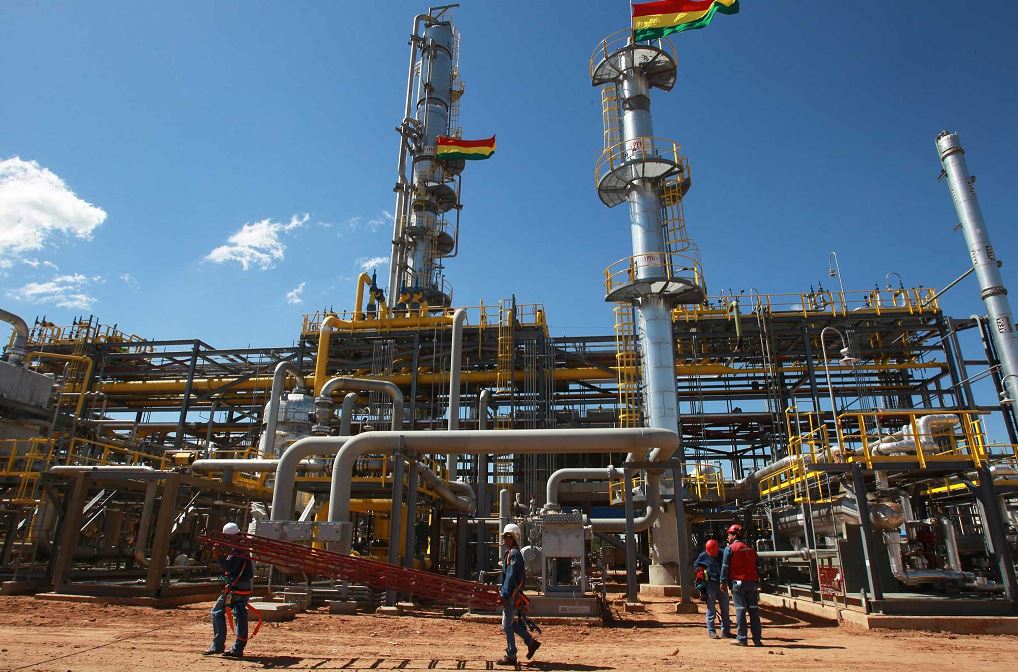RIO DE JANEIRO, BRAZIL – On Wednesday, July 13, the Bolivian government announced it had asked the legislature for authorization to sign five new oil exploration and exploitation contracts in the east and south of the country that will require a total investment of more than US$582 million.
The Minister of Hydrocarbons and Energy, Franklin Molina, told the media that five “draft bills” were sent to Parliament requesting “authorization to sign five new oil service contracts for the exploration and exploitation” of hydrocarbons in the eastern region of Santa Cruz and the southern regions of Chuquisaca and Tarija.
“These five contracts will allow an investment of approximately US$582 million and would generate, if successful, an income for the Bolivian State of around US$1.7 billion,” he highlighted.

THE OIL CONTRACTS
Two of the documents will be signed with the company Canacol Energy Colombia SAS, with headquarters in Canada and “important operations in Colombia”, according to information released by the Ministry of Hydrocarbons and Energy.
The other three correspond to Vintage Petroleum Boliviana Ltda., a subsidiary of the US-based multinational Occidental Petroleum Corporation (OXY).
Suppose the authorization process is expedited in Parliament, and the exploration work yields positive results. In that case, the five areas to be operated by these companies “could enter into production” in 2023, said Molina.
“Therefore, it is crucial that our Legislative Assembly treats these projects, which are of utmost importance for the country”, he remarked.
According to ministry data, Canacol Energy Colombia SAS has evaluated the Ovaí and Florida Este areas in Santa Cruz, while Vintage Petroleum Boliviana Ltda. will be in charge of the Sayurenda and Yuarenda areas in Tarija and Carandaití in Chuquisaca, Santa Cruz and Tarija.
BOLIVIA’S HYDROCARBON PRODUCTION
Molina indicated that the five areas are expected to produce about 3 million cubic meters per day of natural gas and approximately 5,600 barrels per day of liquids.
The minister said that the production and income projections that these new projects would generate are “good news for the country” because they show that “the reactivation of the upstream (exploration and production) is a reality”.
Natural gas was Bolivia’s main export product and the mainstay of the Bolivian economy in the last two decades, with its main markets in Argentina and Brazil.
In recent years, a decrease in production and income generated by the sale of hydrocarbons has been noticed due to price fluctuations in external markets.
A certification report in 2018 determined that Bolivia had 10.7 trillion cubic feet (TCF) of proven natural gas reserves, which were calculated to have a life of 14.7 years.
A year ago, the Bolivian government presented a plan to attract foreign capital for hydrocarbon exploration and production.
Elecnor has been awarded the construction of the ‘Sabanitas-Panama III’ power transmission line in Panama, whose contract amounts to US$86.5 million and whose works are expected to be completed in 2024, the company informed.
This infrastructure, belonging to Panama’s energy transmission company (Etesa), has been classified as a work of National Interest by the country.
Specifically, the awarded works construct a 230 kV transmission line with a network transport capacity of 1,000 megavolt amperes (MVA) for each of the two circuits.
ELECNOR’S GOAL
Elecnor indicated that the objective of this new infrastructure is to safely evacuate all the energy generated in the gas plants in the province of Colón and strengthen Panama’s electrical network.
It is a major project from the energy point of view, as it increases the transmission capacity of the network.
The project contemplates the installation of towers up to 49 meters high and uses more than 2,400 tons of steel to carry it out.
The new network, which will be approximately 46 kilometers long, will be built along the Panama-Colón highway, which links the country’s two main economic centers.
In addition, two GIS-type electrical substations will be built at both ends of the transmission line, as well as the sectioning of the existing transmission lines.
With information from El Periodico de la Energia

